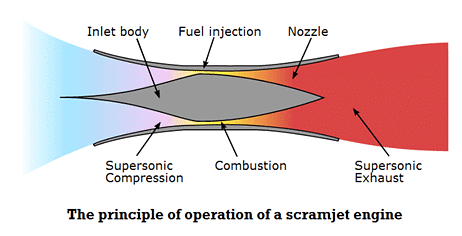

These aircraft are called X-planes because the aircraft are used for experiments. Navy and aircraft manufacturers to build experimental aircraft. NASA has been involved in supersonic flight experiments since the 1940s. Researchers also fly actual supersonic aircraft that have been modified for research experiments. They help researchers to learn more about how an aircraft will fly and to test new designs.

Wind tunnels are tube-shaped facilities that move air over a vehicle as if it were flying.

NASA researchers can simulate supersonic flight by using small models of aircraft in wind tunnel experiments. NASA studies supersonic flight in three ways. View Larger Image → How Does NASA Study Supersonic Flight? Credit: Ensign John Gay, USS Constellation, U.S. This kind of cloud sometimes forms as aircraft break the sound barrier. The Hornet is flying through an unusual cloud. The space shuttle is flying at supersonic speeds when it reaches the lower part of Earth's atmosphere as it approaches for landing.Īn F/A-18 Hornet aircraft speeds up to supersonic speed. During atmospheric re-entry, spacecraft slow to supersonic speeds. Launch vehicles fly at hypersonic speeds - greater than Mach 5 - while in Earth's upper atmosphere. From about 45 seconds after launch until about two minutes after launch, the shuttle accelerates from Mach 1 to Mach 5. Rockets like the space shuttle fly at supersonic speeds after liftoff. Space vehicles fly at supersonic speeds too. It can also help in the design of new vehicles used to explore space. Learning more about supersonic flight helps NASA design aircraft to perform better at supersonic speeds. NASA studies flight in support of the nation's air transportation system and the development of future air and space vehicles. Aeronautics is the study of the science of flight. NASA studies supersonic flight as part of its aeronautics research. NASA is studying and testing devices that could be used on aircraft to lessen the noise and window-rattling effects of supersonic flight. It is similar to the sharp release of pressure when a pin pops a balloon and makes a loud noise. A sharp release of pressure after the buildup of a shock wave is heard as a sonic boom. The shock wave forms a cone of pressurized air.

Wind tunnels move air over the models as if it they were flying. NASA learns about supersonic flight by using small models of aircraft in wind tunnels. This force forms a shock wave, much like the wave created by the front, or bow, of a boat moving in water. As objects travel through the air, the air molecules are pushed aside with great force. Air reacts like a fluid to supersonic objects. It flew for the last time in 2003.Ī sonic boom is a loud, thunder-like noise heard by a person on the ground when an aircraft flies overhead at supersonic speeds. That is about half the amount of time it would take typical airliners to fly the same distance. It could fly people from London to New York in less than 3 1/2 hours. The Concorde's maximum speed was more than twice the speed of sound. The space shuttle orbiter flies at supersonic speeds during portions of its mission.Īn airplane called the Concorde was the most notable passenger airplane to travel at supersonic speeds. Military fighter aircraft also fly this fast. Image Credit: Andrew Davidhazy/Rochester Institute of TechnologyĪ bullet fired from a gun is an example of an object that flies at supersonic speeds. The bullet is traveling at 1.5 times the speed of sound. This picture shows a bullet and the air flowing around it. "Chuck" Yeager became the first person to fly an aircraft faster than the speed of sound.Ī bullet fired from a gun travels at supersonic speeds. Supersonic includes speeds up to five times faster than the speed of sound, or Mach 5. Flight that is faster than Mach 1 is supersonic. The Mach number is the ratio of the speed of the aircraft to the speed of sound. These speeds are referred to by Mach numbers. The speed of sound is about 768 miles per hour (1,236 kilometers per hour) at sea level. Vehicles that fly at supersonic speeds are flying faster than the speed of sound. The regimes of flight are subsonic, transonic, supersonic and hypersonic. Supersonic flight is one of the four speeds of flight. It is the speed traveled by rockets and the space shuttle as they go into orbit. This is more than five times the speed of sound. This is the speed traveled by most of the commercial airplanes that carry people and cargo. Words to Know (based on Earth's atmospheric conditions):


 0 kommentar(er)
0 kommentar(er)
